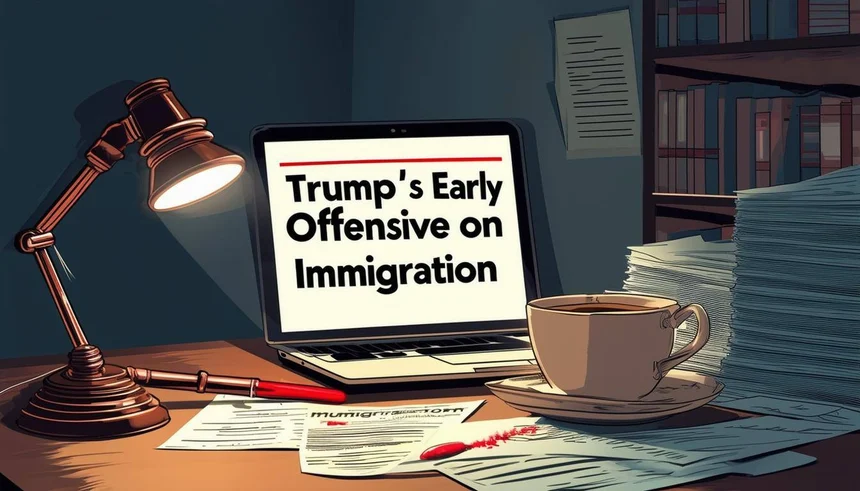In his first few days in office, President Trump and his administration have introduced a slew of measures aimed at reducing Immigration. On his first day, he signed a number of executive orders that will reshape the Immigration landscape as we know it for the foreseeable future. This article will focus on the changes that we believe will impact most of our clients.
A summary of the changes is below:
-
Ending Birthright citizenship.
Even Trump seemed to acknowledge that this one may not withstand scrutiny, but he signed it anyway. The 14th Amendment guarantees that children born in the US automatically become citizens. The Supreme Court has already ruled on this. However, because the 14th Amendment says it only applies to those born in the US and subject to the jurisdiction thereof, he is challenging the interpretation arguing that not everyone is subject to the jurisdiction of the US. This includes those legally present on visas such as the H-1B and H-4. Lawsuits have already been filed, and an injunction has been issued. This will be a drawn-out legal battle that will end up at the Supreme Court. Watch this space.
-
Extreme vetting and Hiring Freeze.
Two executive orders signed by the President will result in a higher level of scrutiny for foreign nationals and longer adjudication times. The first Executive Order directs government agencies to put in place procedures to enhance security screening and vetting of foreign nationals and the second one places a hiring freeze on federal civilian employees. This means that the agencies that adjudicate Immigration benefits (USCIS, DOL, DOS, etc.) will not be able to hire, even for vacant positions. The combination of being short-staffed and having to go through additional screening procedures will result in longer waiting times, especially for those going for visa stamping.
-
Travel bans.
Although no travel bans have been announced at the time of writing this article, travel bans are expected for at least 12 countries. Anyone outside of the US, when the travel ban is announced, will not be permitted to re-enter the country unless they fall under an exception to the rule.

-
Laken Riley Act.
This bill was passed by Congress and is the first law to be signed by the President. It allows authorities to detain foreign nationals suspected/accused (not convicted) of a crime. It also gives states the power to sue the federal government if they feel that their state is being harmed by the issuance of visas to certain nationalities. This law gives the states the power to control immigration, which many deem to be unconstitutional.
-
Recission of Biden’s Executive Orders.
Under the Biden administration, we saw a complete review of Trump’s previous policies, which resulted in several initiatives including an executive order directing federal agencies to attract and retain foreign talent as it relates to artificial intelligence. This executive order has now been rescinded, so if you are applying for an EB-1A or NIW in the field of artificial intelligence, you can no longer rely on the prior executive order.
Conclusion
The above summary is intended to make our readers aware of the changes in the Immigration landscape, particularly as it relates to foreign nationals who are in the U.S. with a valid status. Executive Orders are directives to Government agencies to establish new procedures. What those procedures look like or how they will be implemented remains to be seen.
Nothing in the executive orders directly targets employment-based Immigration such as H-1Bs or green cards but the overall impact of the directives will undoubtedly slow down the process for many.
We will continue to provide updates on the above and any other policy changes that could directly impact our clients.
If you have any questions regarding the above, please contact PLG Partner Chris Prescott at cprescott@patellegal.com.